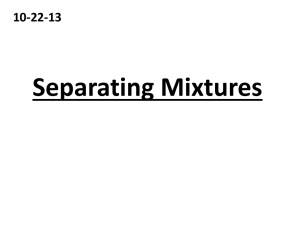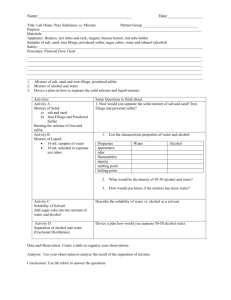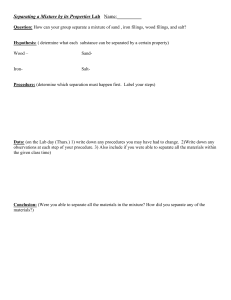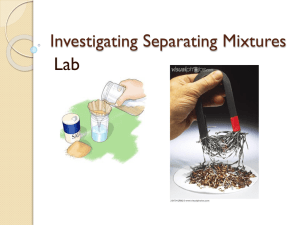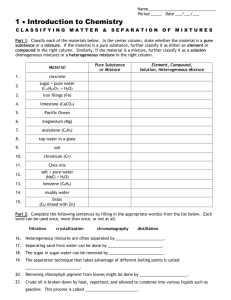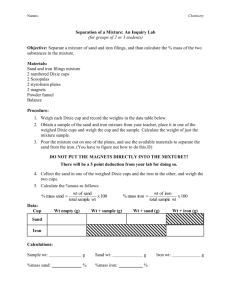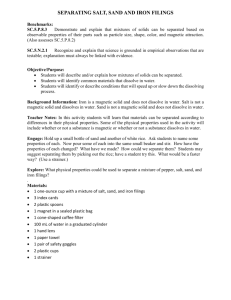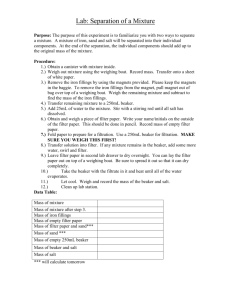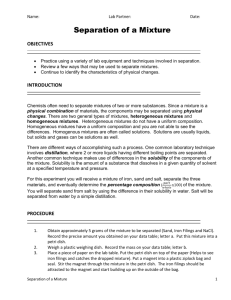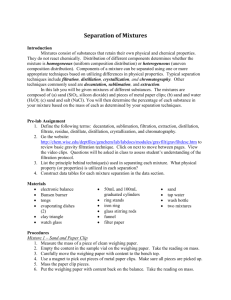Chemistry 2015-2016 Name: Separation of a Mixture Date: Per
advertisement
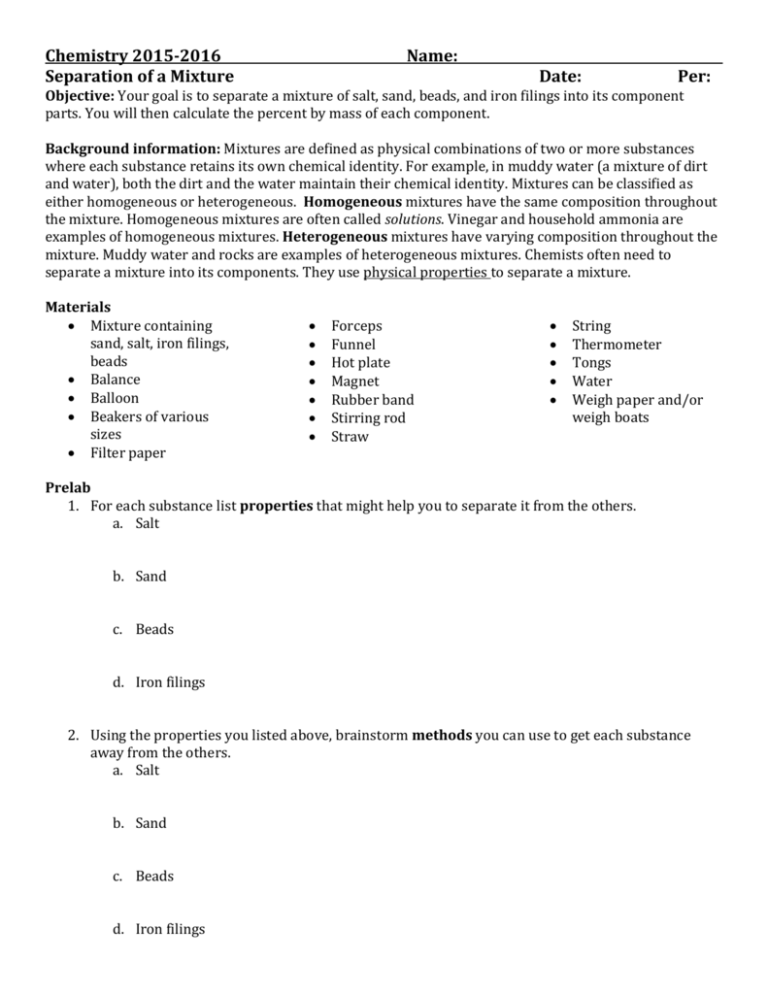
Chemistry 2015-2016 Separation of a Mixture Name: Date: Per: Objective: Your goal is to separate a mixture of salt, sand, beads, and iron filings into its component parts. You will then calculate the percent by mass of each component. Background information: Mixtures are defined as physical combinations of two or more substances where each substance retains its own chemical identity. For example, in muddy water (a mixture of dirt and water), both the dirt and the water maintain their chemical identity. Mixtures can be classified as either homogeneous or heterogeneous. Homogeneous mixtures have the same composition throughout the mixture. Homogeneous mixtures are often called solutions. Vinegar and household ammonia are examples of homogeneous mixtures. Heterogeneous mixtures have varying composition throughout the mixture. Muddy water and rocks are examples of heterogeneous mixtures. Chemists often need to separate a mixture into its components. They use physical properties to separate a mixture. Materials Mixture containing sand, salt, iron filings, beads Balance Balloon Beakers of various sizes Filter paper Forceps Funnel Hot plate Magnet Rubber band Stirring rod Straw String Thermometer Tongs Water Weigh paper and/or weigh boats Prelab 1. For each substance list properties that might help you to separate it from the others. a. Salt b. Sand c. Beads d. Iron filings 2. Using the properties you listed above, brainstorm methods you can use to get each substance away from the others. a. Salt b. Sand c. Beads d. Iron filings 3. Once you know how you will separate each component, draw a flowchart to show your procedure. Your flowchart should include words, pictures, and arrows that help guide you through the lab. Remember that you will need to report the percent by mass for each component, so be sure to account for this in your procedure. Data table: Note that depending on your procedure, you MAY need to collect more data than the 5 items listed here – use the space to the right to collect any additional data. Total mass of mixture Mass of sand Mass of iron filings Mass of salt Mass of beads Chemistry 2015-2016 Separation of a Mixture Analysis Name: Date: Per: 1. Calculate the percent by mass of each component in your mixture. Show your work. a. Sand c. Iron Filings b. Salt d. Beads 2. Obtain the true percent composition of your mixture from your teacher. For each component in your mixture, calculate the percent error. Experimental percent by Actual percent by mass Percent error mass Sand Salt Iron filings Beads 3. Error analysis: account for your errors. What do you think happened to cause your experimental percent composition to be different from that actual percent composition? Be specific. 4. If you were to do this lab over again, what would you do differently? 5. If you had not been told the make-up of your mixture prior to starting the lab, how would you have approached separating it?

